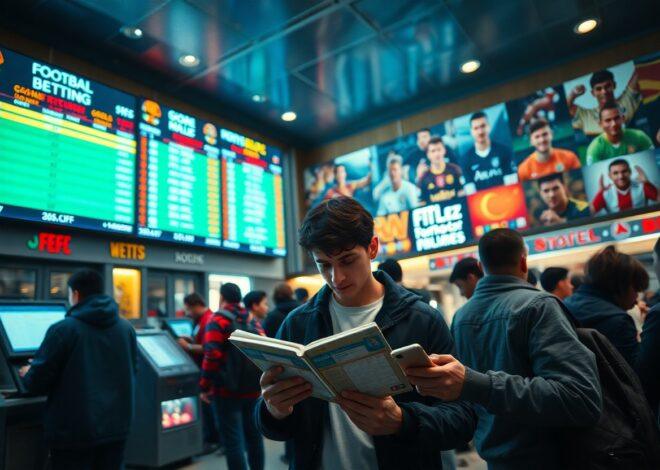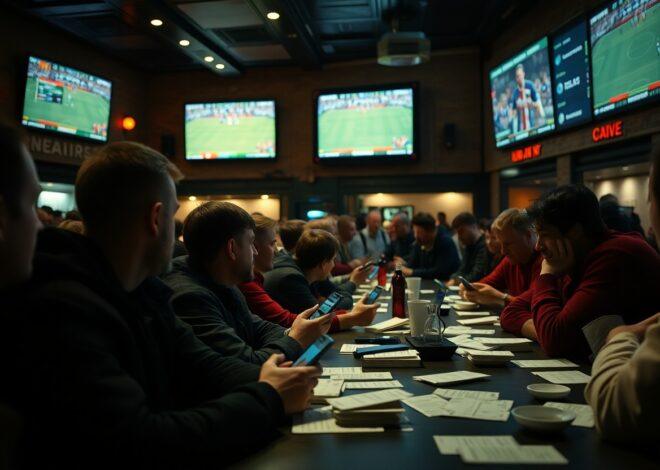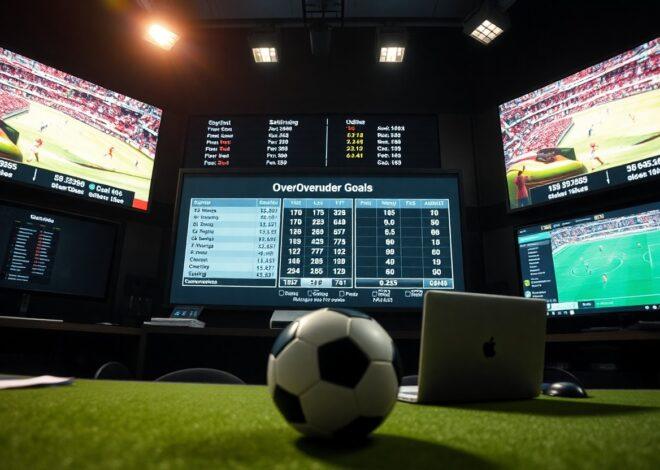
The influence of weather conditions on live betting odds
You can improve live betting decisions by understanding how weather shifts alter play; weather-driven odds swings can be tracked via in-play data while sudden storms or wind pose heightened risk for bettors and markets, yet also create profitable opportunities for those using value betting techniques.
Weather Patterns: The Unseen Players in Live Betting
Shifting conditions often trigger immediate market reactions in live betting, with bookmakers adjusting lines as soon as visibility, precipitation, or wind change; for example, sustained heavy rain can swing goal markets by 10–30% within minutes. Sharp traders monitor sensor feeds and local reports, cross-checking expected win probabilities against baseline odds (see wikipedia) to spot brief mispricings caused by weather surprises.
How Rain and Wind Affect Game Dynamics
Heavy rain reduces ball grip and passing accuracy—studies and match data show passing completion can fall by around 8–12%—while muddy fields increase slip-related turnovers and slow counterattacks. Wind gusts over 20 mph disrupt long passes and set-pieces, boosting the value of conservative in-play bets on low totals and affecting goalkeeper success rates; live betting reacts fastest on markets tied to scoring and set-piece frequency.
The Role of Temperature in Player Performance
High temperatures above 30°C accelerate fatigue and substitution frequency, often producing higher error rates and slower pressing intensity, while cold below ~5°C stiffens muscles and can reduce kicking accuracy. Quantifiable impacts—typically a few percent shift in distance covered or pass success—create exploitable moments in live betting as teams adjust pace and rotation strategies.
Teams exposed to heat often show a 3–7% drop in high-intensity sprints after the 60th minute; using stadium temperature and humidity feeds can reveal short-lived mispriced lines for goals and cards, a technique highlighted in value-focused strategies making temperature a measurable edge in live betting.
Temperature Effects — Live Betting Signals
| Metric | Impact on live betting |
|---|---|
| Stadium Temperature (°C) | High temps ↑ fatigue → favour under/low-intensity markets and late-game substitutions |
| Humidity (%) | High humidity amplifies heat stress → increased error rates, nudging markets for cards and corners |
| Player Rotation Rate | Higher rotations in heat reduce scoring tempo → live odds tilt toward fewer goals |
| Historical Home/Away Performance | Teams acclimatised to extremes show smaller performance drops—adjust live models accordingly |
Assessing the Impact of Weather on Odds
Quantifying weather effects on live betting requires combining forecast inputs, historical match logs and real-time sensor feeds; traders typically increase spreads and adjust market depth as precipitation or wind forecasts change, with notable odds volatility around sudden gusts or downpours that alter possession and shot rates. Bookmakers model pitch conditions, player fatigue from heat and delay probabilities to decide whether to widen margins or suspend markets, creating both risk and opportunity for sharp live betting strategies.
Historical Data: Analyzing Weather Influence on Outcomes
Large-scale analysis of hundreds to thousands of fixtures shows wet pitches often reduce shots on target and raise the share of long balls, pushing totals markets lower; scouting datasets let bettors spot repeatable edges—especially in lower leagues where lines are mispriced.
Real-Time Adjustments: How Sportsbooks React During Events
Automated feeds, radar updates and in-play stats drive defined odds changes within seconds: wind gusts, sudden rain or a red card trigger algorithmic repricing and manual trader intervention, with rapid odds swings on totals, corners and bookings; liquidity shifts and staking patterns then determine whether markets simply reprice or get temporarily suspended for safety and liability control in live betting.
Operationally, sportsbooks fuse radar, player-tracking and crowd-noise indicators into trader dashboards; risk limits, automated hedge orders and liquidity thresholds govern execution, so markets in exposed venues (open-roof stadia, coastal sites) show the largest live betting moves. Sharp bettors monitor such feeds and exchange flows for short windows of mispricing, while bookmakers deploy time-limited suspension rules to cap extreme liability during severe weather events.
Strategies for Capitalizing on Weather-Driven Value Bets
Monitor microclimates and target markets like totals and Asian lines where liquidity lags; use short-term radar updates, referee pitch inspections and team substitutions to catch market inertia, then deploy selective stakes in live betting when odds deviate. Pair early exploitation with strict bankroll rules and stake sizing.
Identifying Mispriced Odds in Inclement Weather
Bookmakers adjust quickly on obvious shifts but often underprice hidden factors such as poor drainage or crosswind effects; look for implied probability gaps >5% versus your model. Heavy rain commonly reduces expected goals by 10–25%, shifting totals and corner lines.
Timing Your Bets: When to Stake on Weather Changes
Best windows in live betting are immediately after official announcements and again after 15–20 minutes of play when tactical adjustments reveal true impact; avoid the first automated prices and scale stakes to edge and volatility, prioritizing markets where weather visibly alters measurable actions (shots, crosses, set-pieces).
Combine radar, referee reports and broadcast visuals to time entries: a sudden wind shift at 20′ that cuts crossing volume by 40% will change corner and goal markets, and documented instances show odds swings near 18% inside 10 minutes. Use smaller units during initial volatility and increase as patterns confirm to capture sustainable value in live betting.
The Psychology of Bettors in Weather Affected Events
Weather-driven shifts force rapid decisions in live betting, producing rapid odds swings as bettors react to wind, rain, or lightning. Sharp bettors exploit momentary mispricing, while casual punters often chase visible moves, creating both profit opportunities and dangerous volatility for those who ignore changing conditions.
Emotional Responses to Unexpected Weather Conditions
Sudden storms or gusts trigger fear and overconfidence cycles in live betting: some bettors pull stakes to avoid perceived risk, others double down on recency cues like a soggy pitch favoring defenders. Bookmakers frequently suspend markets during lightning, and emotional bets after the restart can distort lines for minutes, producing ephemeral edges for disciplined traders.
Crowd Behavior and Its Effects on Betting Odds
Home crowds amplifying momentum under adverse weather often lead to skewed live betting prices as on-site sentiment spills into social feeds. Loud, wet conditions can exaggerate perceived momentum, prompting odds to move more than underlying game-state warrants.
Professional traders monitor attendance figures, decibel spikes and tweet volume to quantify crowd impact: a sudden social-volume spike can correlate with a fast 3–7% shift in live betting markets within seconds. Remote liquidity providers then correct lines, so timing is critical—local crowd-driven moves often create the best opportunities for disciplined, algorithmic responses.
Future Forecasts: Technology and Its Role in Predicting Weather for Live Betting
High-resolution models like the HRRR (3 km, hourly) and ECMWF ensembles nowfeed live betting markets with rapid updates and uncertainty metrics; radar-based nowcasting and satellite assimilation cut short-term forecast error by significant margins, allowing traders to react to sudden wind gusts or microbursts. APIs from providers such as The Weather Company and OpenWeatherMap supply .csv and JSON feeds for odds engines, and integration with automated parsers can change markets within minutes.
Integrating Climate Science with Betting Strategies
Climate normals (30-year averages), seasonality and teleconnections like ENSO inform longer-term probability priors that complement short-term forecasts for live betting; quantitative teams incorporate ensemble spread to size stakes and identify mispriced lines, turning small edges into sustainable gains via disciplined bankroll rules and value betting, while highlighting positive expected value opportunities and the danger of overreacting to single-model outliers.
Practical application shows traders overlaying 30-year normals with real-time HRRR outputs to adjust exposure: a sudden forecast of gusts >20 mph prompts liability shifts on totals and player props, and documented strategies that harvest a consistent 1–3% edge per season rely on blending climate baselines with minute-by-minute model updates for smarter live betting decisions.
Conclusion
From above, weather variables such as wind, rain, and temperature materially shift probabilities and force rapid market adjustments in live betting, affecting tempo, scoring and player performance; odds models update in-play and savvy bettors exploit mispricings in live betting to gain edge when conditions change.



